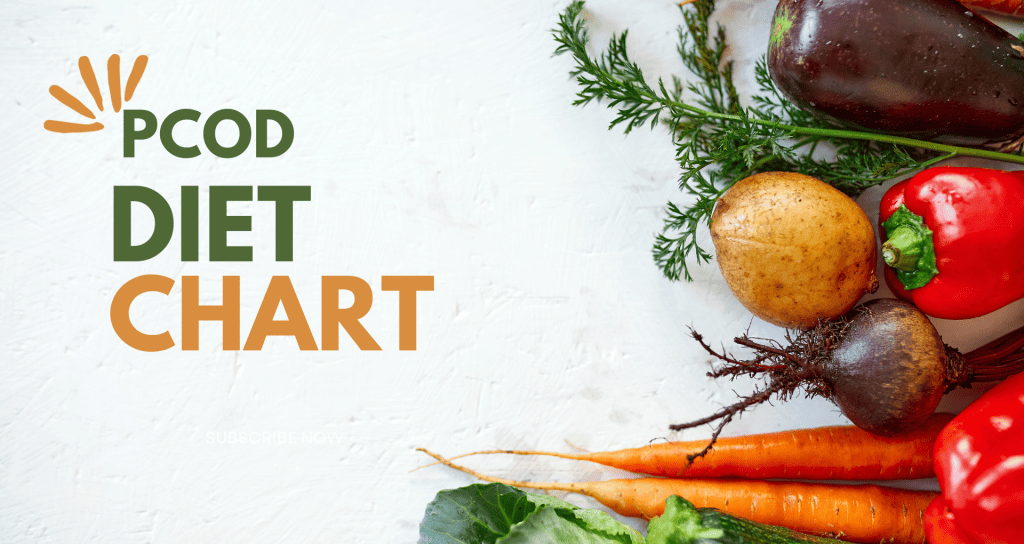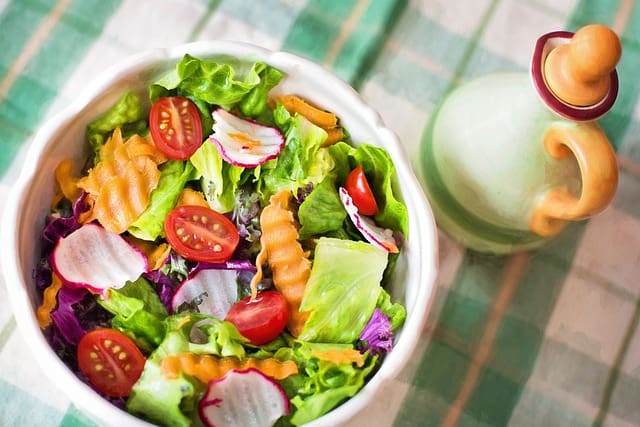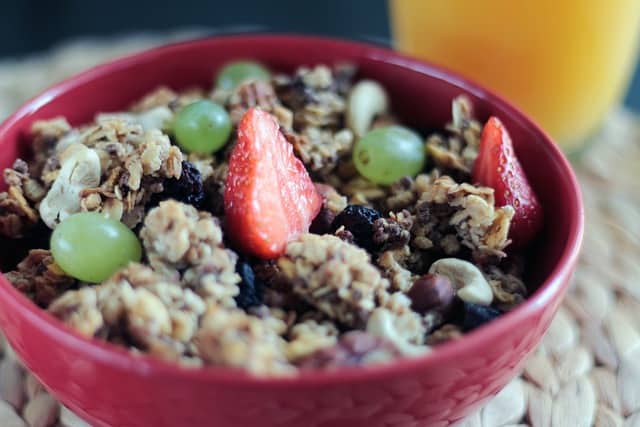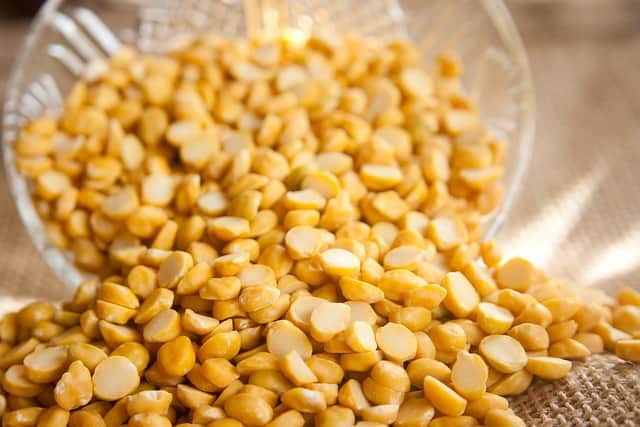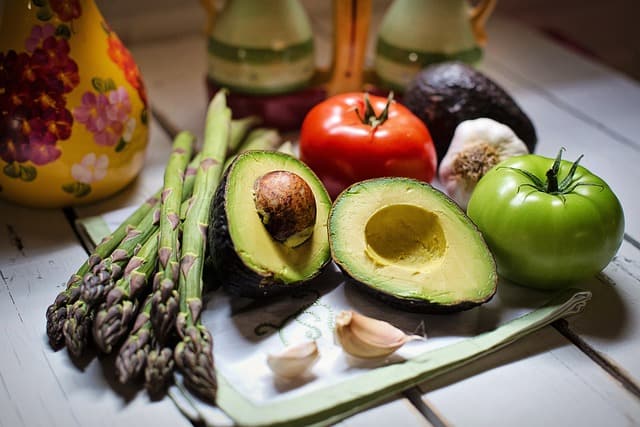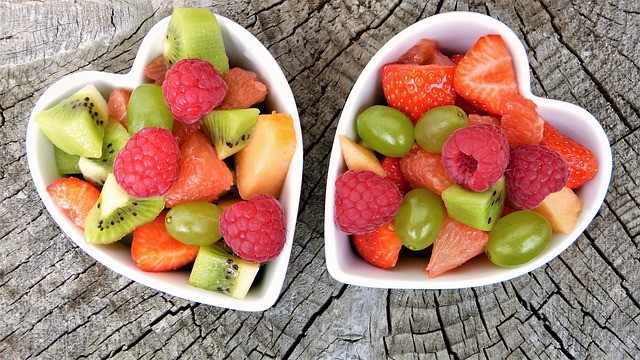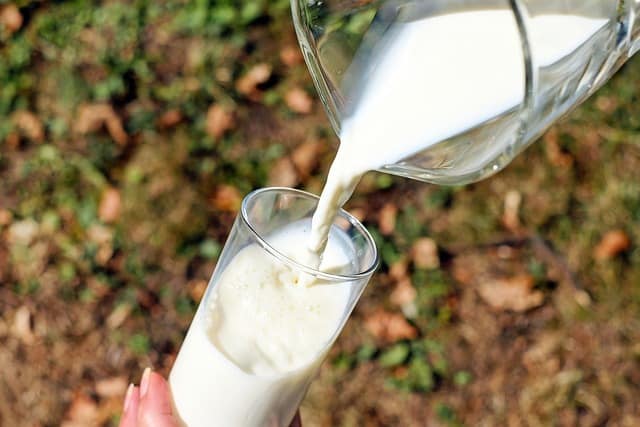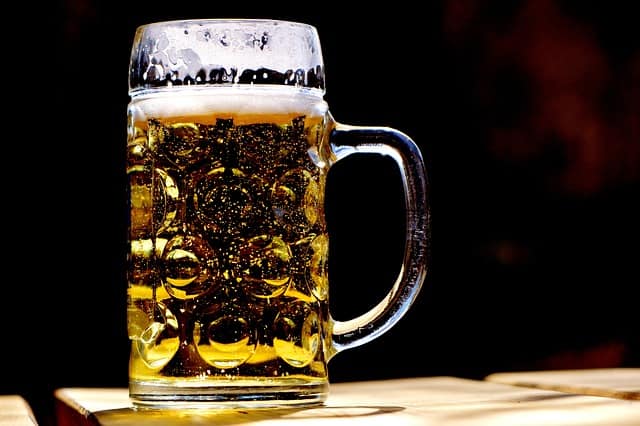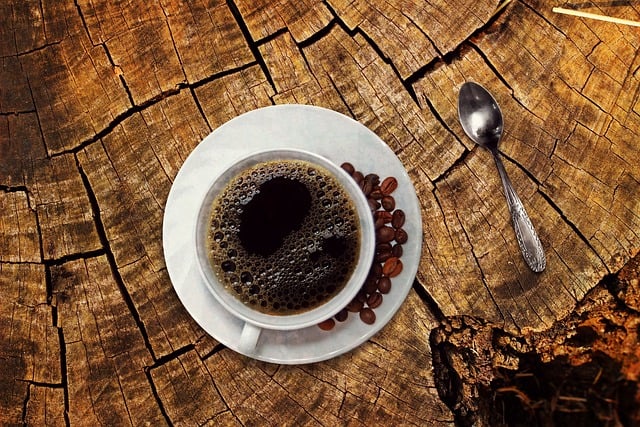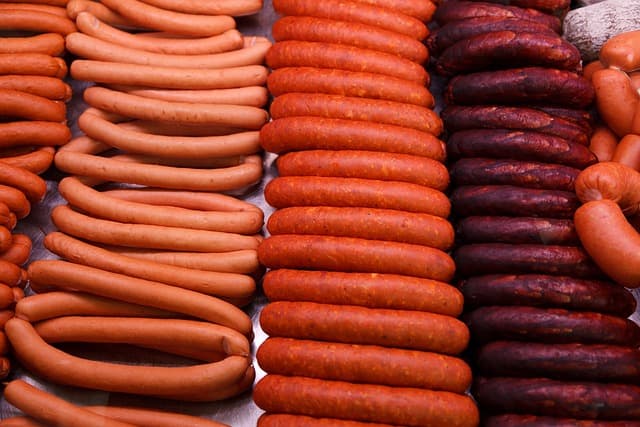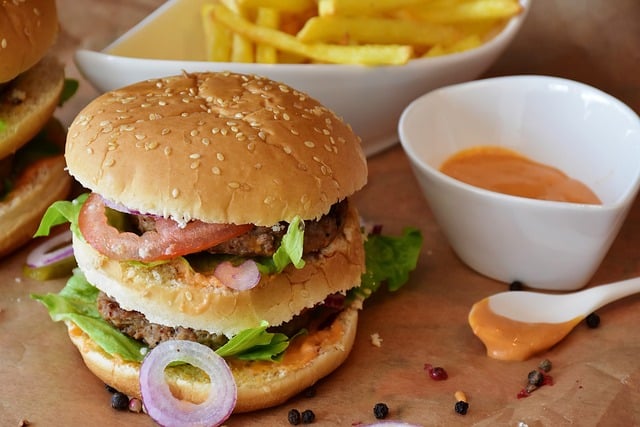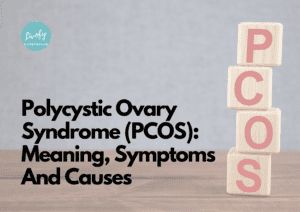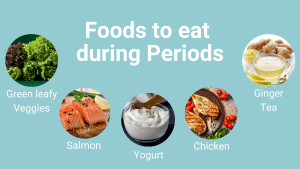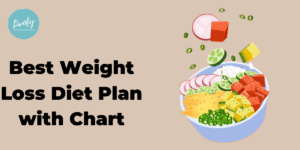Achieving good health with Polycystic Ovary Syndrome (PCOS) can be challenging, but this super helpful diet chart is designed to make it easy for you. The focus here is on nutrition that goes beyond the basics, offering delicious and healing meals for your body. This includes a variety of natural foods such as leafy greens, fatty fish, and nuts that can help alleviate symptoms of PCOS and improve your overall well-being. Following this dietary path with mindfulness and understanding can make dining a daily tribute to your health. Let this diet chart guide you towards a harmonious blend of taste and vitality, and discover the joy of eating well with PCOS.
What Is a PCOD Diet Chart?
Polycystic Ovary Disorder (PCOD) is a common condition characterized by hormonal imbalance in women of reproductive age, leading to irregular menstrual periods and ovarian cysts. It’s associated with insulin resistance and can increase the risk of diabetes, heart disease, and infertility. Symptoms often include weight gain, acne, thinning hair, and excessive hair growth on the body. Management typically involves lifestyle interventions like diet chart for PCOD , exercise, and sometimes medications to regulate the menstrual cycle and improve insulin sensitivity. Get to know about your Ideal Weight by using Ideal Weight Calculator.
A PCOD diet chart for weight loss is a nutritional plan tailored to help manage the symptoms of Polycystic Ovarian Disorder. It emphasizes a balanced intake of high-fibre vegetables, lean proteins, anti-inflammatory foods, and whole grains while limiting processed foods, sugars, and unhealthy fats to improve hormonal regulation and insulin sensitivity.
1. Low-GI Foods
People who suffer from PCOD experience insulin resistance of high insulin in their bodies which can cause an increase in blood sugar levels. Consumption of Low-GI foods can help with this issue. Foods that have a low glycemic index do not spike your blood sugar or insulin levels and get absorbed into the bloodstream slowly. Foods such as leafy greens, whole grains, legumes, and nuts should be a part of your diet chart for PCOD if you are suffering from PCOD.
2. Anti-inflammatory foods
One can also experience inflammation in the body when suffering from PCOD. Therefore, adding anti-inflammatory foods such as fatty fish, green tea, and mushrooms to your pcod diet chart can help you manage the condition.
7 Days PCOD Diet Chart For Weight Loss
A 7-day PCOD diet chart for weight loss includes nutrient-dense, low-glycemic foods to stabilize insulin levels, focusing on fibre-rich vegetables, whole grains, lean proteins, and healthy fats. Get the ideal body fat calculator from Livofy.
It typically excludes refined carbs and sugars, promoting gradual, sustainable weight loss while addressing the hormonal imbalances of PCOD. Managing PCOD can be really tough and therefore adding the right foods in a diet chart for PCOD can make a lot of difference. Given below is the 7-day diet chart for PCOD for weight loss.
PCOD Diet Chart For Weight Loss – Day 1
| PCOD Diet Chart For Weight Loss – Day 1 | |||||
| Breakfast | Stuffed Besan Cheela | ||||
| Lunch | Vegetable Salad with Paneer Tikka | ||||
| Snack | Tea with Makhana | ||||
| Dinner | Multigrain Chapati and Sarso Ka Saag | ||||
Given below are the breakfast, lunch, snack, and dinner options for day 1
Breakfast
Stuffed Besan Cheela
Besan cheela has a low glycemic index so it won’t spike your blood sugar and insulin levels. It also has good amounts of fiber in it. It is made out of gram flour which is anti-inflammatory. You can add this to your diet chart for PCOD for best results.
Lunch
Vegetable Salad with Paneer Tikka
Vegetable salad should be a part of every diet chart for PCOD as it is really good for blood sugar levels and contains many essential vitamins and minerals. Vegetables also have many anti-inflammatory properties which can be really beneficial to manage pcod or pcos.
Snack
Tea with Makhana
Makhanas are low in calories and have anti-inflammatory properties which are really beneficial to deal with pcod. Therefore, it should be a part of your diet chart for PCOD for weight loss.
Dinner
Multigrain Chapati and Sarso Ka Saag
Multigrain chapati digest slowly unlike refined grains. This does not cause any spike in the blood sugar levels. Since people suffering from pcod and pcos can have insulin-related issues, adding this meal to your pcod diet chart for weight loss can help deal with the issue.
PCOD Diet Chart For Weight Loss – Day 2
| PCOD Diet Chart For Weight Loss – Day 2 | |||||
| Breakfast | Sprouts Cheela | ||||
| Lunch | Multigrain Chapati With Soybean Curry | ||||
| Snack | Tea with Makhana | ||||
| Dinner | Vegetable Quinoa | ||||
Given below are the breakfast, lunch, snack, and dinner options for day 2
Breakfast
Sprouts Cheela
Sprouts can be a great addition to your diet chart for PCOD and there is a reason for it. They have a low glycemic index which is great for controlling pcod.
Lunch
Multigrain Chapati With Soybean Curry
You can add this meal to your Diet Chart for PCOD because of its nutritional value. Multigrain chapati is a great source of complex carbs and soybean is high in protein and low in fat.
Snack
Tea with Makhana
Tea provides the body with energy and makhana has anti-inflammatory properties which is really helpful to deal with pcod. You can add this snack to your pcod diet chart for weight loss journey.
Dinner
Vegetable Quinoa
Vegetables such as kale and spinach are anti-inflammatory in nature and also contain tons of vitamins and minerals. Vegetable quinoa is low in calories and also has a low GI which makes it a perfect meal to be added to a diet chart for PCOD .
PCOD Diet Chart For Weight Loss – Day 3
| PCOD Diet Chart For Weight Loss – Day 3 | |||||
| Breakfast | Poha with Curd | ||||
| Lunch | Mix Dal, Rice with Salad | ||||
| Snack | Tea with Makhana | ||||
| Dinner | Shahi Paneer with Brown Rice | ||||
Given below are the breakfast, lunch, snack, and dinner options for day 3
Breakfast
Poha with Curd
Poha is made with flattened rice and is widely consumed in India as a low-carb food option. Curd on the other hand contains Vitamin D and keeps your gut healthy.
Lunch
Mix Dal, Rice with Salad
Dal made from various legumes has good amounts of protein in it. You can also opt for brown rice here which has a low glycemic index compared to white rice. Salad on the other hand is a rich source of fiber and contains many essential vitamins and minerals. You can add various leafy green vegetables such as kale, spinach, and broccoli to your diet chart for PCOD .
Snack
Tea with Makhana
Choosing healthy snacks can help you manage your pcod a lot better. Having makhanas can help keep your liver healthy by detoxifying it and can also boost your body’s metabolism which is crucial for losing weight.
Dinner
Shahi Paneer with Brown Rice
Both Panner and brown rice have a low GI, which means you won’t suffer from elevated blood sugar levels after eating them. Having low GI foods in your pcod diet chart can help you to manage the condition better.
PCOD Diet Chart For Weight Loss – Day 4
| PCOD Diet Chart For Weight Loss – Day 4 | |||||
| Breakfast | Quinoa Sprouts Upma with Curd | ||||
| Lunch | Chapati with Soyabean Lentil Bhurji | ||||
| Snack | Tea with Makhana | ||||
| Dinner | Methi Paratha and Cucumber Raita | ||||
Given below are the breakfast, lunch, snack, and dinner options for day 4
Breakfast
Quinoa Sprouts Upma with Curd
Quinoa can be really beneficial for PCOD as it contains many vitamins and minerals like zinc, magnesium, and calcium. It also contains antioxidants and good amounts of fiber which can help to regulate blood sugar levels.
Lunch
Chapati with Soyabean Lentil Bhurji
Soybean is made out of defatted soy flour, which means it has almost no fat in it. Lentils on the other hand are a great source of protein. You can add this meal to your pcod diet chart for weight loss. to get the best results.
Snack
Tea with Makhana
Tea has caffeine in it which help to boost the mood. Makahans are low in calories and can help you to lose weight. You can also add makhanas to your Diet Chart for PCOD to get good amounts of antioxidants in the body.
Dinner
Methi Paratha and Cucumber Raita
Methi helps to improve insulin sensitivity in the body. Women who suffer from pcod have issues with insulin sensitivity in the body. Adding a methi paratha to your pcod diet chart can help you deal with this issue.
PCOD Diet Chart For Weight Loss – Day 5
| PCOD Diet Chart For Weight Loss – Day 5 | |||||
| Breakfast | Ragi Dosa, Sambhar and Butter Milk | ||||
| Lunch | Mix Dal, Rice, and Salad | ||||
| Snack | Tea with Makhana | ||||
| Dinner | Vegetable Quinoa | ||||
Given below are the breakfast, lunch, snack, and dinner options for day 5
Breakfast
Ragi Dosa, Sambhar and Butter Milk
In PCOD and PCOS women suffer from cramps during their periods. Having ragi can help prevent cramps. Buttermilk helps to boost immunity in the body and also lowers blood pressure, a great meal to add to a pcod diet chart.
Lunch
Mix Dal, Rice, and Salad
Mix dal is made with various legumes which offer a lot of nutrients to the body. Salad on the other hand can help improve digestion and aid in weight loss. If you are looking to lose weight then adding salads to your pcod diet chart is the way to go!
Snack
Tea with Makhana
Makahans are really low in calories which makes it a great snack for PCOD. It also has anti-inflammatory properties which can really help if you have PCOD.
Dinner
Vegetable Quinoa
If you have a pcod diet chart then it should have a lot of vegetables in it. Mainly because vegetables are some of the most nutrient-dense foods out there. They also have good amounts of fiber in them which can help in weight loss.
PCOD Diet Chart For Weight Loss – Day 6
| PCOD Diet Chart For Weight Loss – Day 6 | |||||
| Breakfast | Sprouts Cheela | ||||
| Lunch | Multigrain Chapati and Soybean Curry | ||||
| Snack | Tea with Makahana | ||||
| Dinner | Vegetable Quinoa | ||||
Given below are the breakfast, lunch, snack, and dinner options for day 6
Breakfast
Sprouts Cheela
Cheelas are made out of gram flour which is really high in fiber and also has various anti-inflammatory properties. Sprouts on the other hand are low in calories and can help with weight loss. Adding this meal to your pcod diet chart can give you good results.
Lunch
Multigrain Chapati and Soybean Curry
Chapati made out of multigrain contains complex carbs which are a lot better than refined carbs. Soybeans have almost no fat and contain good amounts of protein.
Snack
Tea with Makahana
Makahans are really good for heart health and also help to detoxify the liver. You can add this great snack to your pcod diet chart for the best results.
Dinner
Vegetable Quinoa
Quinoa is really nutrient dense. It contains fiber which can help you to lose weight and also regulate blood sugar levels. It is low in calories and women suffering from PCOD can easily add it to their pcod diet chart.
PCOD Diet Chart For Weight Loss – Day 7
| PCOD Diet Chart For Weight Loss – Day 7 | |||||
| Breakfast | Stuffed Besan Cheela | ||||
| Lunch | Paneer Tikka, Vegetable Salad | ||||
| Snack | Tea with Makhana | ||||
| Dinner | Mulitgrain Chapati, Sarso Ka Saag | ||||
Given below are the breakfast, lunch, snack, and dinner options for day 7
Breakfast
Stuffed Besan Cheela
Besan cheela is made out of besan which is high in fiber and also has anti-inflammatory properties. This can help women suffering from PCOD.
Lunch
Paneer Tikka, Vegetable Salad
Paneer has a low GI which means it won’t raise your blood sugar levels and vegetables have tons of fiber in them which helps with digestion. This meal is not only delicious but also offers a lot of health benefits and should be added to your pcod diet chart.
Snack
Tea with Makhana
You can makhanas as a snack to your pcod diet chart to keep your heart and liver healthy. Not only this, but it also helps regulate blood sugar levels in the body.
Dinner
Mulitgrain Chapati, Sarso Ka Saag
To keep your blood sugar levels stable during PCOD you can add multi-grain chapati to your pcod diet chart. Having saag is also beneficial as it has anti-inflammatory properties and can improve heart health.
| Days | Breakfast | Lunch | Snack | Dinner | ||||||||
| Day 1 | Stuffed Besan Cheela | Paneer Tikka with Veg Salad | Tea and Makahans | Multigrain Roti with Sarso ka Sag | ||||||||
| Day 2 | Sprouts Cheela | Soyabean Curry with Roti | Tea and Makahans | Vegetable Quinoa | ||||||||
| Day 3 | Poha with Curd | Brown Rice, Mix Dal, VegSalad | Tea and Makahans | Shahi Paneer with Brown Rice | ||||||||
| Day 4 | Quinoa Sprouts Upma with Curd | Soybean Lentil Bhurji with Roti | Tea with Makhanas | Methi Paratha with Cucumber Raita | ||||||||
| Day 5 | Ragi Dosa, Sambhar, Buttermilk | Mix Dal, Rice, Curd, and Salad | Tea with Makhanas | Vegetable Quinoa | ||||||||
| Day 6 | Sprouts Cheela | Soyabean Curry, Multigtrain Roti | Tea with Makahanas | Vegetable Quinoa | ||||||||
| Day 7 | Stuffed Besan Cheela | Paneer Tikka, Vegetable Salad | Tea with Makhanas | Sarso ka Saag with Multigrain Roti | ||||||||
Benefits of following a PCOD Diet Chart
When it comes to any health condition following a healthy diet can help you manage it a lot better. The same applies to PCOS. By following a Pcos diet chart you are making smarter choices when it comes to eating and this will eventually help you to deal with the condition in a better way.
Here is why it is important to follow a PCOS Diet Chart
1. Manage PCOS
In PCOS (Polycystic Ovary Syndrome) women suffer from irregular periods, too much androgen in the body, and cysts in the ovaries. By following a pcos diet chart you can deal with these problems. Foods in a pcos diet chart such as leafy greens and fruits reduce the inflammation in the body and also help to regulate blood sugar levels which is really important for PCOS. You can also add other fibrous foods to your pcos diet plan to lose weight. To calculate when you are getting your next periods get hold of the period calculator from Livofy.
2. Managing Insulin Levels
Insulin plays a crucial role in managing the blood sugar levels. In PCOS, women suffer from insulin resistance which causes high blood sugar levels. Following a pcos diet chart which has a lot of vegetables and other fibrous foods can help with this issue. You can also follow a pcos diet plan to lose weight.
3. Managing Weight
In PCOS women also experience weight gain. Unhealthy eating habits can make this worse, therefore, it is really important to pick the right foods and make a pcos diet chart or follow a pcos diet plan to lose weight.
Foods to eat while following PCOD Diet Chart?
PCOS or polycystic ovary syndrome is a condition that affects a woman’s ovaries. It causes irregular periods, excess androgen in the body, and the development of cysts in the ovaries. PCOS can be really hard but you can manage it with the help of the right foods and other lifestyle changes. Let’s have a look at some foods you can add to your pcos diet chart.
1. Cereals
2. Pulses
3. Fresh Vegetables
4. Fruits
5. Low-Fat Milk
Let’s talk about these foods in detail
1. Healthy Cereals
Cereals are one of the most consumed breakfast meals around the globe. It is easy to make and is really convenient to have. However, the regular cereals you see in the market are filled with sugar and unwanted chemicals.
If you are suffering from PCOS then your aim should be to buy cereals that are made out of whole grains and also have some amounts of protein and fiber in them. This will keep you full for a long time and reduce your appetite which will eventually help you to lose weight. You can also make healthy cereal at home and add it to your pcos diet chart.
2. Pulses
Pulses are some of the most nutrient-dense foods out there. They are packed with fiber, protein, vitamins, and minerals which can help reduce the risk of Type 2 Diabetes. Pulses should be a part of your pcos diet chart or pcos diet plan to lose weight for sure.
The fiber present in pulses can help to regulate blood sugar levels in women suffering from PCOS. This is because pulses have a low GI which helps to deal with insulin resistance in the body which is one of the main problems in PCOS. Here are some healthy pulses you can have in your pcos diet plan to lose weight:
Some healthy Pulses include
- Kidney Beans
- Lentils
- Mung Beans
- Pinto Beans
- Black Eyed Peas
- Chickpeas
3. Fresh Vegetables
If you are suffering from PCOS then you should have vegetables in your pcos diet chart no matter what and there is a reason for it. Vegetables are one of the most nutrient-dense foods and are great for a pcos diet plan to lose weight.
Vegetables such as kale, spinach, and lettuce have anti-inflammatory properties which can reduce some symptoms of PCOS. Here is a list of vegetables you can add to your pcos diet chart or pcos diet plan to lose weight:
- Kale
- Spinach
- Arugula
- Brocolli
- Mushrooms
- Broccoli
4. Fruits
Fruits are not only delicious but are also home to many essential vitamins and minerals which help the body in a variety of ways. The orange you eat once in a while contains Vitamin C which is really important for immunity. Therefore having fruits in your pcos diet chart is a must.
There are many fruits that have a low GI, which means they do not affect your blood sugar levels which is one of the many issues women suffering from PCOS face. Here is a list of fruits you can add to your pcos diet chart or pcos diet plan to lose weight:
- Red Grapes
- Blueberries
- Blackberries
- Melon
- Papaya
5. Low-Fat Milk
Women suffering from PCOS are often told to avoid milk as it impacts their insulin levels. Milk is also considered a carbohydrate due to the presence of lactose in it. There isn’t much evidence to show if milk is good or bad for pcos. Therefore, consult a doctor before adding milk to your pcos diet chart or pcos diet plan to lose weight.
Foods to avoid while following PCOD Diet Chart?
So now that you are aware of what food to eat in PCOS, let’s not take a look at the foods that should never be a part of your pcos diet chart. If you want to beat PCOS then make sure you are extra cautious before eating these foods.
1. Alcohol
2. Fried Foods
3. Caffeinated Drinks
4. Processed Meat
5. Unhealthy Fats
6. Foods high in salt and sugar
1. Alcohol
If you are suffering from pcos then you should avoid alcohol or only consume it in moderation. In PCOS women already suffer from mood swings and irritability and consuming alcohol can make things worse.
Alcohol in most cases interferes with insulin in the body which is the last thing you want if you have PCOD. Therefore make sure you only have healthy foods and drinks in your pcos diet chart or diet plan for pcos.
2. Fried Foods
Inflammation is one of the symptoms of pcos and consuming fried foods can only make it worse. Not only this but fried foods can also increase the cholesterol and fat levels in the body which will eventually lead to weight gain.
Fried foods are really bad for your blood sugars as well. If consumed for a long time they can cause insulin resistance in the body, which is definitely not good if you are suffering from PCOS. Some examples of fried foods which should never be a part of your pcos diet chart or diet plan for pcos are:
- Fries
- Burger Patty
- Fried Chips
- Fried Chicken
- Fried Fish
3. Caffeinated Drinks
Too much caffeine is not good for PCOS. This is because consuming too much coffee can cause induce anxiety and stress which can then interfere with the insulin levels in the body.
If there is too much stress hormone in the body (cortisol) it can cause your blood sugar levels to rise and cause insulin spikes in the body. Moreover, coffee can also act as a diuretic by losing various water-soluble vitamins such as B2, B5, and B6 which are necessary to control weight. You can add drinks other than coffee such as healthy vegetable juices to your pcos diet chart.
4. Processed Meat
Processed meat is full of unhealthy fats and can cause cholesterol to build up in the body. Just like fried foods, processed meats can also cause or worsen inflammation in the body. Therefore, stay away from processed meat and look for other healthier alternatives to add to your pcos diet chart.
5. Unhealthy Fats
There are two types of fats, namely good fats and bad fats. The good fats ensure good cardiovascular health whereas the bad fats make you go to the ER and there is a reason behind it.
Consumption of unhealthy fats can increase the estrogen production in the body which can make your PCOS symptoms a lot worse. Therefore, it is important for you to stay away from unhealthy fats and add healthy fats to your pcos diet chart.
6. Foods High In Salt and Sugar
Foods that are high in salt and sugar are your worse enemies when it comes to PCOS. These foods include cakes, pastries, chips, fries, and any kind of processed meat.
Foods high in sugar will cause high blood sugar levels and foods high in salt will cause high blood pressure. Prolonged consumption of foods high in salt and sugar can also cause conditions like Type 2 Diabetes. Always make sure to pick and add foods that are low in salt and sugar to your pcos diet chart.
Can PCOD Diet Chart help women to lose weight?
Yes, a PCOD Diet chart can be an effective tool for weight loss in women with Polycystic Ovarian Disorder. It’s designed to improve hormonal imbalances contributing to weight gain by promoting a diet high in fibre, lean protein, and healthy fats, which can aid in appetite control and increase metabolism. The diet also emphasizes low-glycemic-index foods that prevent spikes in blood sugar levels, reducing the risk of insulin resistance—a common issue in PCOD. By following a structured eating plan that addresses the specific needs of women with PCOD, weight loss can become more attainable.
Some Recipes that can be used while following PCOD Diet Chart
Managing PCOS is also possible with the help of various healthy and delicious recipes. These recipes are made with healthy ingredients which have a lot of nutritional value.
1. Instant Pot Chicken Noodle Soup
Who does not love chicken soup? It tastes absolutely delicious and is filled with tons of nutrients. This recipe is filled with spices that have anti-inflammatory properties and are good for immunity. It’s easy and takes really less time to make. Make sure to add this recipe to your pcos diet chart.
2. Mexican Chopped Salad
If you are a fan of Mexican food then you are at the right place. This salad packs a lot of flavors and nutrients as well. This recipe has all the best vegetables have to offer and can be made within minutes. You won’t regret adding it to your pcos diet chart.
3. Grilled Vegetable Wrap with Balsamic Mayo
This is a gluten-free recipe that will surely satisfy your taste buds. It has a unique flavor and loads of nutrients as well. You can add this recipe to your pcos diet chart or pcos diet plan to lose weight.
Expert Review on PCOD Diet Chart
If you are suffering from PCOD or PCOS consuming the right foods can make a lot of difference and help you to manage the condition a lot better. Foods such as leafy greens, and low-GI fruits are great for PCOS and PCOD. To make sure your condition does not get worse stay away from fried foods, caffeinated drinks, unhealthy fats, and foods high in salt and sugar. For best results, you can follow a pcos diet chart or a diet plan for pcos which will give you a clear idea of what to eat and when to eat.
References
FAQ’s
Which food is best for PCOD?
For PCOD (Polycystic Ovary Syndrome), a diet high in fibre, lean proteins, and anti-inflammatory foods is best. Whole grains, leafy greens, fatty fish like salmon, nuts, seeds, and legumes are ideal. These foods help regulate blood sugar, reduce inflammation, and balance hormones, which are crucial in effectively managing PCOD symptoms.
Can I eat milk in PCOD?
In PCOD, consuming milk is a nuanced decision. While milk provides essential nutrients, some studies suggest it might exacerbate PCOD symptoms due to its natural hormones and insulin-like growth factors. Opt for organic or hormone-free milk, and consider non-dairy alternatives like almond or soy milk, especially if you notice any symptom aggravation.
How to lose weight fast in PCOD?
To lose weight fast with PCOD, focus on a balanced diet of fibre, lean proteins, and low-glycemic index foods. Regular exercise, including both cardio and strength training, is crucial. Managing stress and ensuring adequate sleep are also important. Consult a healthcare professional for a personalized plan, as individual needs may vary.
Is Curd good for PCOS?
Curd can be beneficial for PCOS due to its high protein content, probiotics, and calcium. It aids digestion, improves gut health, and may help balance hormones. Opt for low-fat or non-fat versions to avoid excess saturated fat. However, individual tolerance varies, so monitor your body’s response.
Can I eat Paneer in PCOS?
Paneer (cottage cheese) can be included in a PCOS diet, as it’s a good source of protein and calcium. It’s low in carbohydrates, which helps in managing blood sugar levels. However, opt for low-fat versions to control calorie intake and avoid worsening PCOS symptoms related to weight gain.
What is a PCOS diet chart?
A PCOS diet chart typically includes high-fiber foods, lean proteins, and healthy fats. It emphasizes whole grains, fresh fruits, vegetables, nuts, seeds, and legumes while limiting processed foods, sugars, and high-glycemic carbohydrates. Including omega-3-rich foods like fish and balancing each meal to manage insulin levels is crucial.
Can I make a diet plan for PCOS on my own?
Creating a diet plan for PCOS on your own is possible, but it’s best to consult a healthcare professional for personalized advice. Understanding your specific needs, such as insulin resistance or inflammation. A balanced diet focusing on whole foods, fibre, lean proteins, and healthy fats is generally recommended.
Is a diet plan for PCOS hard to follow?
A diet plan for PCOS can be challenging initially, especially if it requires significant changes to your current eating habits. However, planning and focusing on balanced, whole foods makes it more manageable. Personalizing the diet to fit your lifestyle and preferences makes it easier to adhere to.

